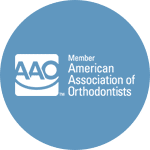Understanding TMJ/TMD: Relief for Chronic Facial Pain
Millions of Americans suffer from chronic facial and neck pain, often associated with Temporomandibular Disorder (TMD).
Your temporomandibular joints (TMJ) play a crucial role in connecting your jawbone to your skull and facilitating essential movements like speaking and chewing. When these joints are affected, everyday activities can become uncomfortable and restricted.
Symptoms of TMD
- Jaw pain
- Ear pain, ringing, or stuffiness
- Frequent headaches or neck aches
- Clicking or popping sound when the jaw moves
- Swelling on the sides of the face
- Muscle spasms in the jaw area
- Changes in the alignment of teeth
- Locked jaw or limited mouth opening
Causes of TMJ
The TMJ operates through a combination of hinge and sliding motions, supported by cartilage and a shock-absorbing disk. Painful TMJ disorders can arise from:
- Disk erosion or misalignment
- Cartilage damage from arthritis
- Joint trauma or impact injuries
Preventing TMJ/TMD
Reduce your risk of TMJ/TMD with these tips:
- Relax Your Face: Keep lips together, teeth apart
- Avoid Habits: Such as teeth grinding and constant gum chewing
- Use Technology Wisely: Opt for a headset or hold your phone to your ear, not cradled
- Chew Evenly: Distribute food evenly on both sides of your mouth
- Maintain Good Posture: Keep your head up, back straight, and shoulders square
If you’re experiencing any symptoms of TMJ/TMD, take the first step toward relief by requesting an appointment with Dr. Nichole Schiro or Dr. Ashlynn Mazurek at Highlands Ranch Orthodontics.



